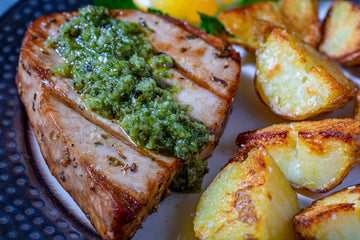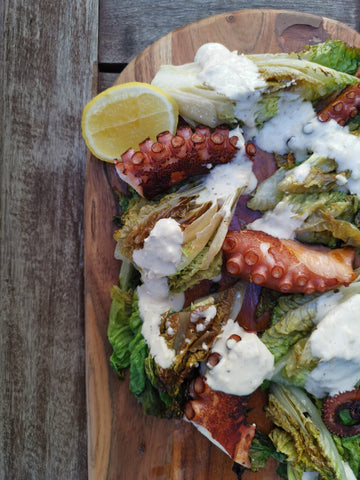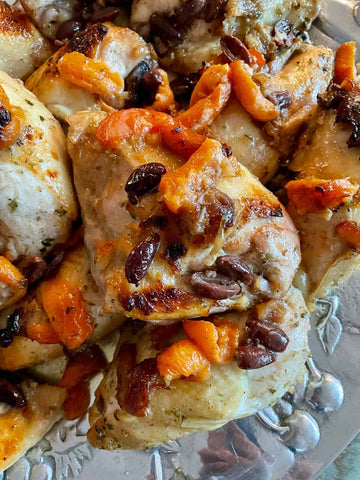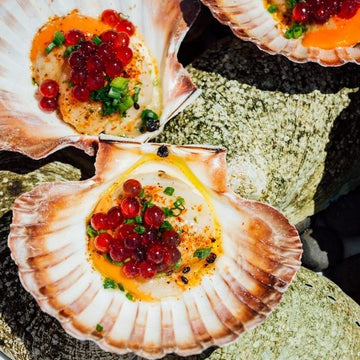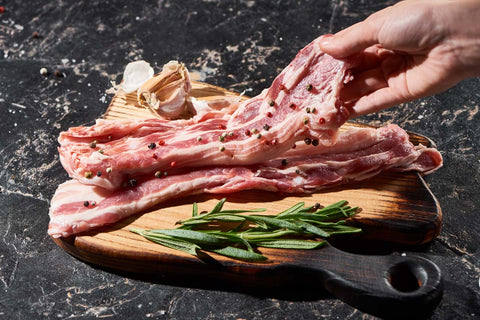
Iberico pork is more than just an ingredient in Spanish cuisine—it is a symbol of cultural identity, culinary tradition, and regional pride. Sourced from the black Iberian pig, which roams freely across Spain’s vast dehesas (oak forests), this prized meat has been an integral part of Spanish gastronomy for centuries.
From Jamon Iberico to Iberico Secreto, the flavors of Iberico pork reflect a deep connection between the land, history, and people of Spain. This blog explores its cultural significance, traditional uses, and why it remains one of the most sought-after meats in global cuisine.
The Historical Roots of Iberico Pork in Spain
The story of Iberico pork dates back thousands of years, influenced by civilizations that shaped the Iberian Peninsula.
Ancient Origins: The black Iberian pig is believed to have descended from wild boars native to the region, with evidence of domestication dating back to the time of the Phoenicians and Celts.
Roman Influence: The Romans refined salt-curing techniques for pork, laying the groundwork for Jamon Iberico, one of Spain’s most prized delicacies.
Moorish Era: Though the Moors introduced many culinary innovations, pork was forbidden in Islamic culture, leading to shifts in Spain’s pork consumption patterns.
Reconquista and Beyond: Following the Christian reconquest, pork regained its prominence in Spanish cuisine, solidifying its role in culinary and cultural identity.
Through centuries of refinement, Iberico pork has become synonymous with Spanish gastronomy, representing a fusion of history, agriculture, and regional tradition.
The Role of Iberico Pork in Regional Spanish Cuisine
Andalusia: The Heart of Jamon Iberico Production
The rolling landscapes of Andalusia provide the perfect environment for raising Iberian pigs, whose acorn-fed diet gives their meat a distinct flavor. The region is renowned for producing Jamon Iberico de Bellota, a dry-cured ham aged for years to develop its deep, nutty profile.
Extremadura: Dehesas and Traditional Farming
Extremadura’s dehesas, oak-covered pastures, are home to free-range Iberian pigs. Here, traditional farming methods emphasize sustainable practices, ensuring the quality and authenticity of Iberico pork.
Castile and León: Roast Iberico Pork Specialties
In central Spain, asado (roasted meats) is a culinary tradition, with Cochinillo Iberico (suckling Iberico pig) being a celebrated dish, slow-roasted to achieve crispy skin and tender meat.
Catalonia and Valencia: Iberico Pork in Coastal Cuisine
While seafood dominates these coastal regions, Iberico pork appears in dishes such as Embutidos Ibericos (Iberico sausages) and Paella with Iberico Pork, blending land and sea influences.
Each region’s unique preparation of Iberico pork showcases Spain’s diverse culinary landscape, proving that this meat is more than just food—it’s a cultural cornerstone.
Traditional Dishes Featuring Iberico Pork
1. Jamon Iberico: The Jewel of Spanish Charcuterie
Jamon Iberico, especially the Bellota variety, is considered the pinnacle of cured ham. Aged for up to four years, it is enjoyed in thin slices, often served with pan con tomate (tomato bread) or paired with fine Spanish wines.
2. Iberico Secreto: The Butcher’s Secret Cut
The Iberico Secreto is a hidden gem—an incredibly tender cut located near the shoulder, known for its marbling and rich flavor. It is often grilled and served simply with sea salt and olive oil.
3. Chorizo Iberico: The Iconic Sausage
Made from Iberico pork, Spanish chorizo is seasoned with smoked paprika and garlic and then cured to develop its bold, smoky taste. It appears in tapas, stews, and is a key ingredient in Fabada Asturiana (Asturian bean stew).
4. Iberico Pork Ribs: Slow-Cooked Perfection
Iberico ribs, known for their deep flavor and natural fat content, are slow-roasted or braised, often coated in honey, sherry vinegar, and herbs for a balance of sweetness and savoriness.
5. Morcilla Iberica: Blood Sausage with Regional Variations
A staple of Spanish charcuterie, morcilla (blood sausage) made with Iberico pork features unique regional variations, such as Morcilla de Burgos, which includes rice for added texture.
These traditional dishes showcase the versatility of Iberico pork, emphasizing its deep-rooted connection to Spanish culture.
The Cultural Symbolism of Iberico Pork
1. A Celebration of Spanish Terroir
Iberico pork reflects the land it comes from, shaped by the environment, diet, and traditional farming methods. The oak forests of Spain’s dehesas directly influence the flavor, texture, and quality of the meat.
2. A Sign of Spanish Identity
Across Spain, Iberico pork is a centerpiece of festivals, family gatherings, and special occasions. From religious feasts to local celebrations, it plays a role in cultural traditions that bring people together.
3. A Legacy of Craftsmanship
The production of Jamon Iberico and other Iberico pork products follows centuries-old techniques, passed down through generations of artisans who preserve the integrity of Spain’s culinary heritage.
Iberico pork is more than food—it’s a symbol of Spain’s agricultural, historical, and cultural identity.
A Culinary Legacy That Lives On
Iberico pork is a defining element of Spanish cuisine, shaped by history, geography, and tradition. Its deep, complex flavors and cultural significance make it one of the most celebrated meats in the world. Whether enjoyed as Jamon Iberico, Iberico Secreto, or chorizo, it carries the essence of Spain with every bite—telling a story of heritage, craftsmanship, and culinary excellence.
FAQs on Iberico Pork in Spanish Cuisine
What makes Iberico pork different from regular pork?
Iberico pork comes from Iberian pigs, which are known for their ability to store intramuscular fat, resulting in superior marbling and flavor. Their acorn-rich diet further enhances the meat’s taste and texture.
Why is Jamon Iberico so highly prized?
Jamon Iberico is valued for its long curing process, rich umami flavor, and nutty, melt-in-your-mouth texture. The highest quality, Jamon Iberico de Bellota, comes from pigs that have exclusively fed on acorns.
What is the best way to cook Iberico pork?
Iberico pork is best cooked simply, allowing its natural flavors to shine. Grilling, roasting, and pan-searing are common methods, often with minimal seasoning such as sea salt and olive oil.
What wine pairs best with Iberico pork?
Spanish Tempranillo, Rioja, and Sherry wines pair beautifully with Iberico pork, balancing its rich flavors with acidity and subtle fruitiness.
How is Iberico pork connected to Spanish culture?
Iberico pork represents Spain's regional identity, agricultural tradition, and culinary craftsmanship. It is a staple in celebrations, family meals, and artisanal food production.
Mar 15 2025



